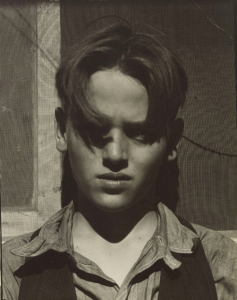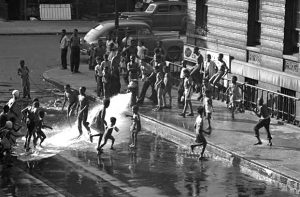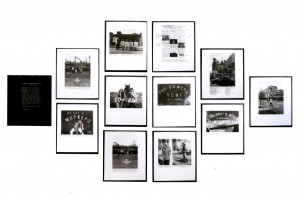American photographers Dorothea Lange, Gordon Parks, and Latoya Ruby Frazier turned their cameras on individuals and communities whose stories were less known to expose their daily trials, struggles, and celebrations.

Dorothea Lange (American, 1895 – 1965), One of the Homeless Wandering Boys, Before the C.C.C., 1933, Gelatin Silver Print, 9 ½ x 7 1/8 in., Gift of H. Russell Albright, MD, 95.971
Dorothea Lange was a photographer and photojournalist, best known for her Depression-era work for the Farm Security Administration. Lange’s photographs influenced the development of documentary photography and humanized the consequences of the Great Depression.

Gordon Parks (American, 1912–2006)Untitled, Harlem, New York, 1948, Gelatin silver print, Courtesy of the Gordon Parks Foundation
Gordon Parks was a photographer, writer, and filmmaker who worked with Life magazine for twenty-two years. His work particularly focused on issues of civil rights, poverty and African-Americans—and in glamour photography.

LaToya Ruby Frazier (American, b. 1982), Campaign for Braddock Hospital (Save Our Community Hospital), 2011, Portfolio of 12 prints, photolithographs and silkscreen, wooden frames, 20 x 17 inches (framed), Museum Purchase, Joel Weinstock Fund, 2016.55.1-12
Latoya Ruby Frazier is a visual artist and professor of photography from Braddock, Pennsylvania. She works in photography, video, and performance to build visual archives that address industrialism, communal history, and healthcare inequality.
TELL A STORY WITH A PHOTO ESSAY
Think about the structure of a photo essay. It is a narrative and must tell a story as clearly and compellingly as possible.
WHAT YOU WILL NEED
All you need is access to a digital camera and editing tools!
WHAT YOU WILL DO
- Tell a story that is unique to your life or your family using the photo essay format.
- Take a series of 3 – 6 photos from around your house or neighborhood. (Remember to follow safe social distancing practices!)
- Look for details that help tell your story. You may want to include objects as well as people!
- Use an app or photo folder to group your pictures together.
- Explore techniques like cropping and enlarging to help focus the story you want to tell.
- Share your photo essay with a family member.
Documentary photography has traditionally been presented as a primary source, a truthful documentation of reality. Can you tell more than one story with the same images? Give it a try! How can different viewpoints be derived from the same image?